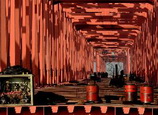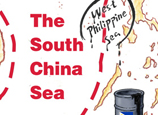
Turn steady
Zhang Ping, Minister for the National Development and Reform Commission (NDRC), said at a press conference on November 10 that the previous slowdown has been controlled since August.
According to Zhang, the slowdown was due to three major reasons. First, the government lowered its expectations for economic growth to 7.5 percent, which allowed for some leeway in plans to shift the direction of the country's economy.
Second, the international economic environment remains uncertain. Weak external demand has affected China's export-dependent economy.
Third, when external demand shrinks, some industries suffer from an excessive production capacity, a problem that can only be alleviated over time.
The Chinese Government has made it a top priority to stabilize growth this year in order to cope with the above-mentioned issues, said Zhang.
This year, China's central bank lowered its benchmark interest rate twice. Since the second half last year, it cut the required reserve rate three times.
Moreover, it has poured a large amount of liquidity into the financial sector. The NDRC approved many large investment and infrastructure projects this year, with a total investment volume surpassing the 4-trillionyuan ($635.93 billion) stimulus package injected into the economy after the 2008 global financial crisis.
A report by SWS Research Co. Ltd. says the Chinese economy has stabilized. But different from Stephen Green's view that the Chinese economy is in a U-shaped recovery, the SWS Research report says that within a certain period of time, the Chinese economy will be in a horizontal L-shape. According to the report, the Chinese economy in the future will resemble that between 1998 and 2002 following the Asian financial crisis.
While external factors can explain the slowing economic growth, a restructuring of the economy can also be responsible. Time is needed to eliminate excessive production capacity, digest financial risks and transform the country's growth pattern. The economy did not pick up immediately after reaching the bottom, but remained at the bottom for nearly five years.
This round of economic adjustment started in 2007 and the vertical part of the L-shape has now been complete, with the horizontal portion beginning in the third quarter.
"To step out of the present predicament, China should rely on reforming production rather than short-term control," said the SWS report. Present reforms mainly concern income distribution, financial reform and monopoly-breaking reform. The changes, if achieved, are expected to help facilitate the Chinese economy's rise once again.
















 Pretty model shines at Guangzhou Auto Show Hyundai Motor stage
Pretty model shines at Guangzhou Auto Show Hyundai Motor stage


![]()
